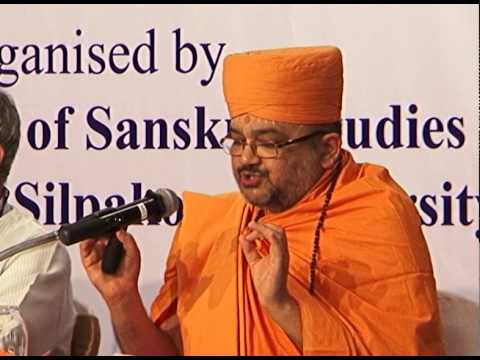Plenary Session, Ramayana in Thailand
- Diary date June 28, 2015. Written August 8, 2015.
- Mar 24, 2016
- 3 min read

Among the many contributions of Indian thinkers to the world is the discovery of human mind as a major component in operating human life. All physical activities are supported by an intent, and the intent can be biased through our personal scare for survival. While it cannot be proven that we possess the scare of survival in us, the experiments are done if we can always feel the freedom of the dignity of our life. M K Gandhi in the modern days has been the latest among the experimenters.
Through various analysis done some three thousand years ago, the scholars hypothesized that the mind operates in two modes. In a "local" mode, it tries to help one manipulate, create strategy and compete to get air and water to survive. These processes are subjective and eventually bring pain, distress and decay. In a "transcendental" mode, the mind soars, imagines, explores the unknown and discovers our "mistakes." The latter is available to all, but not properly utilized. Sanskrit language became a structured language where one can notice one's deficiencies and correct them. Everyone has a voice, but we search for truth. Truth is expressed when the mind is unbiased. Sanskrit is a tool in such cleanup. Truth by definition is wholesome and has to be discovered. The discovery is joy.
After lunch, we had the plenary session. Four representative scholars had been invited. In a massive organizational effort, one cannot expect full objectivity. The "scholars" represent different camps. A swami from the Swaminarayana sect presented his views on truth and manifestation, Mr Shastri from the languge group of "Speak Sanskrit" movement spoke about simplifying Sanskrit grammar to make it popular. Personally along with many other scholars, I think that simplifying Sanskrit is an ill-conceived idea. Perfection has its charm. Mr Rajiv Malhotra spoke about his observations how many of the western scholars are engaged in distorting Indian ideas. He was promoting a forthcoming book by him to be released in the Fall. Finally a Thai professor gave a recount of the activities in Sanskrit language at Silpakorn University, the host of the Conference. The Princess and the Foreign Minister did sit through these lectures.
Dr Sampadananda Misra from the Sanskrit group in Pondicherry has been a good friend to me. He visited me in the US and helps me in organizing the Story of Sanskrit project which I have been preparing for the last few years. He has attended the previous Conferences and briefed me about the personalities. He introduced me to a large number of scholars who seem to carry an independent view as I do. Any organization needs support and resources. The principles need be compromised in order that resources may flow. Unfortunately some corruption becomes integral to human society.
I did meet many senior scholars and many young students. The parallel tracks of paper presentations began late afternoon. I thought to follow the Philosophy section. The time was short, each paper was given thirty minutes that included Q&A. I will discuss my views of the papers tomorrow.
The Government of India had arranged a reception for the delegates at a different hotel. All delegates were shuttled in. The staff from the local Indian Embassy were hosting the event. The Princess and the Foreign Minister showed up. There were different kinds of food to sample. I happened to meet many senior scholars who have been champions of Sanskrit all their life. I was wondering how such receptions might have been when the royal patronage was at its pinnacle. I was expecting special Sanskrit compositions for the occasion honoring the Princess and the congregation. Nobody had thought about it. It did not happen.
We were treated to a segment of Ramayana performed by the local Khon troupe. The story of Ramayana reached the Thai shores through the traders from India in the first millennium AD and has been adapted to the Thai culture. It is a slow movement dance accompanied by various percussion instruments and occasional vocal accompaniment. The performance is more like a dance drama. I was seated next to the musicians and trying to study the rhythm from the percussion reflected in the steps of the dance. The animal characters use masks, a remnant of the old Khmer mask dances. Some of the poses of the principal characters like Rama and Lakshmana did carry the mudra style from the Indian style most likely through Odissi.









Comments